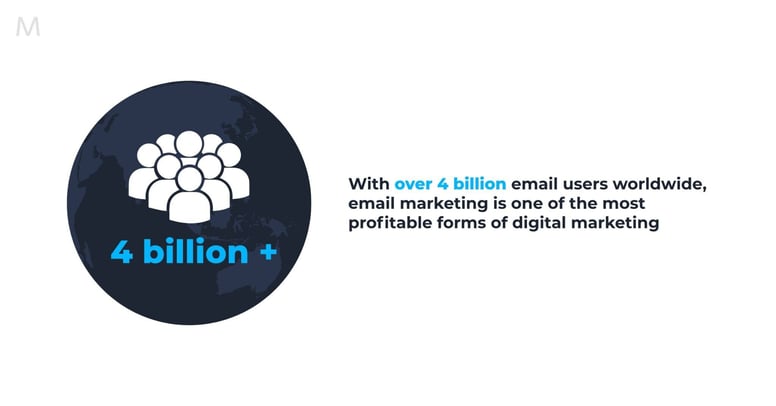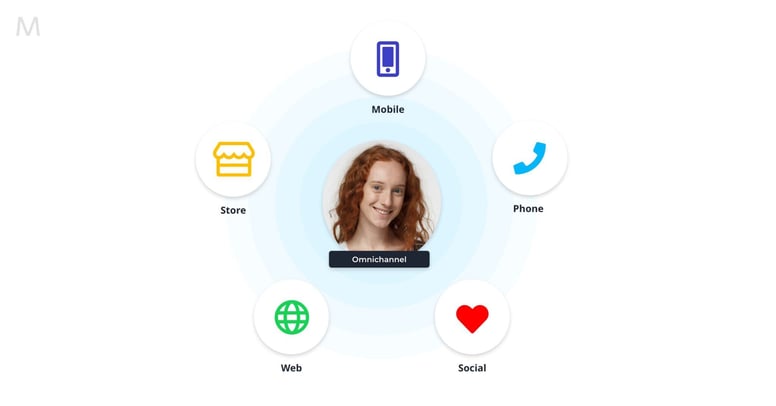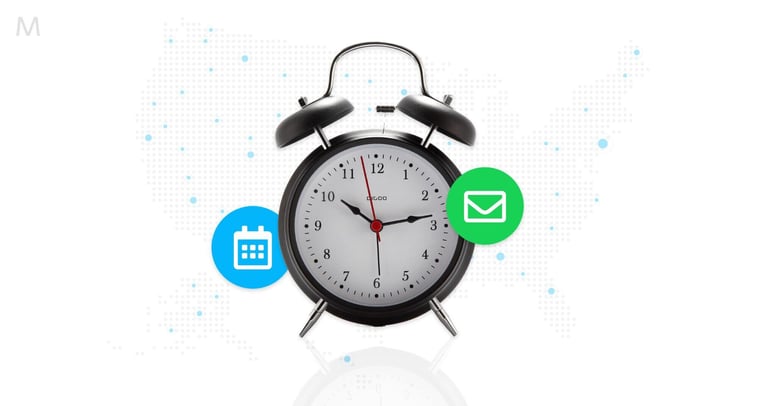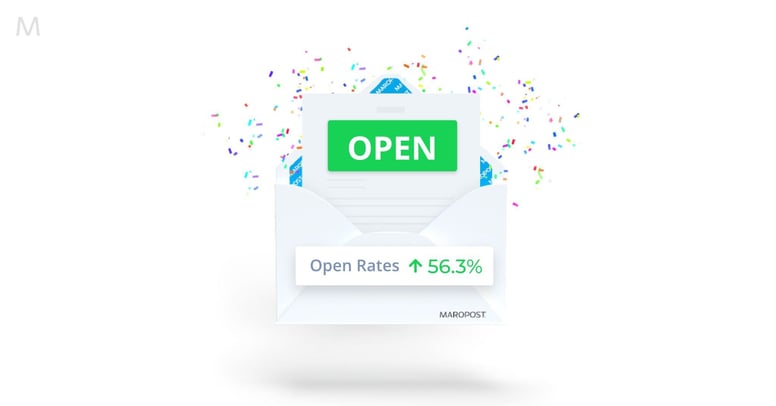Email marketing is one of the marketers’ go-to solutions for promoting businesses online. It’s still one of the most trusted digital marketing channels. In the past few years, communication apps such as Slack, Microsoft Teams, etc., have been coined the term “email killers”. But is this true? Have these communication apps replaced the mighty email? We will explore the challenges faced by email marketers in this article.
The short answer is “Nope!” With a projected 4.3 billion email users by 2023, email marketing remains one of the best ways to connect with your customers. With nine out of ten marketers relying on email marketing to distribute content organically, it still holds the title of the top channel for growing small and medium-sized businesses. ROI for email marketing campaigns can go up to 4200%.

Email marketers also face an endless cycle of strategizing and executing a marketing campaign. Email marketing is undoubtedly one of the most effective channels of digital marketing, but it still poses hurdles that might waste a lot of time and resources. In this article, you’ll get a comprehensive take on the top six challenges email marketers face in 2022 and how to overcome them. Read on to learn more!
- Why is understanding email strategy vital to your marketing success?
- 6 problems marketers face while building an email marketing strategy
- Planning for potential email strategy roadblocks
- Applying an omnichannel approach into your email strategy
- Figuring out the best time to send emails
- Inability to reduce email unsubscribe rates and spam complaints
- Failing to understand the reader’s interest
- Generating curiosity through interesting subject lines
- Tips to take your email marketing strategy up a notch
- Important Takeaways
Why is understanding email strategy vital to your marketing success?
The easiest way to understand the importance of email marketing is via statistics. So let’s take a look.
- With over 4 billion email users worldwide, email marketing is one of the most profitable forms of digital marketing
- About 93% of marketers use email marketing extensively to distribute their content organically
- In comparison to Facebook and Twitter, email marketing has 40% higher conversion rates
- Over 21% of the emails sent are usually opened within the first hour.
Now you understand why email marketing is still so vital to the success of any marketing campaign. The go-to digital marketing platform, emails still hold a lot of dominance over the entire marketing strategy of an organization. That is why it’s necessary to integrate email into your overall marketing strategy for maximum conversion rates.
But before that, we must understand the common issues email marketers face in 2022 and then move on to how you can overcome them.
6 problems marketers face while building an email marketing strategy
Planning for potential email strategy roadblocks
Email marketing requires proper planning. Many marketers have fallen prey to email marketing roadblocks due to a lack of proper planning and strategizing. On the other hand, these roadblocks may appear due to the lack of adherence to email marketing rules and regulations.
Although many professionals agree that these rules have been laid out only to protect the customer, there is a chance they might not be up to date with them. This came up post-May 2018 when the General Data Protection Regulation (GDPR) was brought into effect. A significant portion of email marketers didn’t initially understand the regulations, therefore they feared it would take a toll on their marketing success.
Regardless, the implementation of GDPR worked the other way round. It eventually started helping out marketers by providing them with the necessary criteria to pander to customers who actually want to be a part of their email list.
Recent Mail Privacy Protection updates will probably follow a similar pattern – they seem scary at first, but as an industry we’ll adapt to this change and improve our strategies together.
Applying an omnichannel approach into your email strategy
All marketing professionals know the importance of marketing across multiple platforms. Despite that, so many brands are yet to provide a truly omnichannel experience. But first, let’s understand what exactly omnichannel marketing is.
Omnichannel marketing happens when all marketing channels that an organization uses are integrated and work in co-operation to provide a consistent brand experience. It is different from a multi-channel marketing approach. In multi-channel marketing, the brand does use multiple channels, but they are all acting independently. But omnichannel marketing takes the strengths of every channel and creates a rather unified customer experience.

Let’s say you build a loyalty program. Now, once your email recipient clicks on the CTA in the promotional email, they will head to the landing page of their website. Here, they will create an account and sign in. They can now access it from various platforms such as in-store, online, via the mobile app, etc.
Brands that use more than three channels for their omnichannel marketing campaigns have a 250% higher engagement rate than the brands using a single marketing channel. But always remember – the goal is to create a unified experience. So pick your platforms carefully and make sure they integrate seamlessly.
Figuring out the best time to send emails
Let’s say you have hyper-personalized email threads and a spot-on campaign. But all this is effective only if the customer finds and opens your email. This is why the time at which emails are sent matters a lot.

With so many emails filling up their inbox throughout the day, it is very easy for yours to get buried under a pile of new unopened emails. Hence it is vital that you send your emails around the time of the day where your customers will check their inbox and offer better click-through rates. Test different times, monitor results and turn to best practices to determine what’s best for your audience.
Inability to reduce email unsubscribe rates and spam complaints
Irrelevant content can be the reason for the spike in spam complaints. As an email marketer, your main aim should be to develop personalized content. If you have noticed a significant rise in spam complaints, you are doing something wrong with your content (or targeting an irrelevant audience).
This will only lead to higher unsubscribe rates, eventually affecting your ROI negatively. After this, even if you do begin to deliver engaging content, there is a chance that your audience might not be lured to click-through. Well, this is how you tackle this particular problem:
- Give your customers customizable subscription options (whether they want content newsletters, promotions, company updates, or all of these)
- Give your customers the ability to update the frequency of emails, newsletters, etc.
- Be ready to reply and provide timely assistance
Failing to understand the reader’s interest
In this fast-paced world, people won’t glance twice at an email that doesn’t interest them. With so many incoming emails in a day, people will only pay attention to your emails if there is something that solves their specific problem.
Failure to understand the reader’s interest will only result in your email going unnoticed, and your email marketing efforts wasted. Understand your audience before you send them an email.
How? Create target personas, track email content engagement, send out microsurveys to learn their topics of interest, make use of your customer’s purchase history, etc. to get a better picture of who you are pandering to. Sending a general email to all your customers will result in very low new customers and customer retention rates.
Generating curiosity through interesting subject lines
The subject line is the first thing your customer is going to read when they receive your mail. It might meagerly be a sentence, but it must be catchy enough to grab their attention. A major problem with many email marketers is that they don’t pay enough attention to the subject lines of their emails.
Here are a few tips you could use to write interesting subject lines:
- Keep the subject line short and precise. Ideally it should be between six to nine words
- Insert important action words at the beginning of the subject line: “Limited-time”, “Last chance”, etc.
- The subject line should outline exactly what the email is about and nothing else
- Place relevant keywords in your subject line to help place your email in important folders across various inboxes
- Don’t be afraid to use emojis and puns
- A/B test multiple subject lines to understand what works well for your audience
Tips to take your email marketing strategy up a notch
Work on your personalization tactics
If you want to build a deeper bond with your customers, make sure you work on your personalization strategies. Don’t stop at name and contact information. Understand their pain points and provide them with a solution. Get a clearer perception of what drives them to stay with you and build on that. Make them feel understood and watch your sales cycles shorten.
To make a personalized email strategy, use proper segmentation based on your subscriber’s purchase or browsing history, send emails from a real person (not “no-reply”), make their anniversaries special with exclusive offers, request one-to-one feedback and so on.
You can use Maropost’s dynamic email personalization to get a 360-degree view of each of your customers, enabling you to create truly unique and tailored experiences. Segment, schedule and develop dynamic content according to unified customer data.
Increase open rates
Low open rates can be due to a multitude of reasons, but here is how to deal with them.

- Write an engaging subject line (you can test subject lines using the tips)
- Make sure the preview text is short
- Perform email A/B testing
- Send your emails at the best times when your recipients tend to be more active
Integrate your email database with other systems
Data is at the dead center of every marketing strategy. Hence, integrating data from various sources is a great way to optimize your email marketing content. Make sure you acquire useful data-integration tools to help you easily gather and collate all data from email marketing efforts, blog posts, etc., to make better data-driven decisions.
Once this is done, time to identify and split various customer segments and cater to them according to their needs. This means more personalization, and more personalization means more conversion. You have to make your customers feel like you understand them. They’ll trust you as a result.
Finally, make sure that your content isn’t flaky and is impactful enough to engage the customer. Once you have a clearer idea of what the customer needs, craft messages that address their specific needs and provide them a solution to their specific problems.
Measure your return on investment
A closed-loop marketing system is one of the most effective ways to measure your ROI. Measuring your ROI is vital – it will indicate if your efforts are bringing any tangible results. Make sure you have a detailed view of specific metrics such as number of website visitors, number of click-throughs leading to purchases, etc.
Lower spam complaints
If you want to reduce spam complaints from the customer’s end, then only send them relevant content. Even so, send them content regularly, not constantly. Limiting emails to once a week would be ideal. Also, provide recipients with the option to adjust the frequency at which they receive emails or the type of content they want to receive.
Important Takeaways
Email marketing may be one of the most profitable marketing channels, but the hurdles it poses can be tricky to overcome. Go through the above article in detail to know more about these challenges faced by email marketers and tips to overcome them. Once you have this in the bag, you are good to go!

